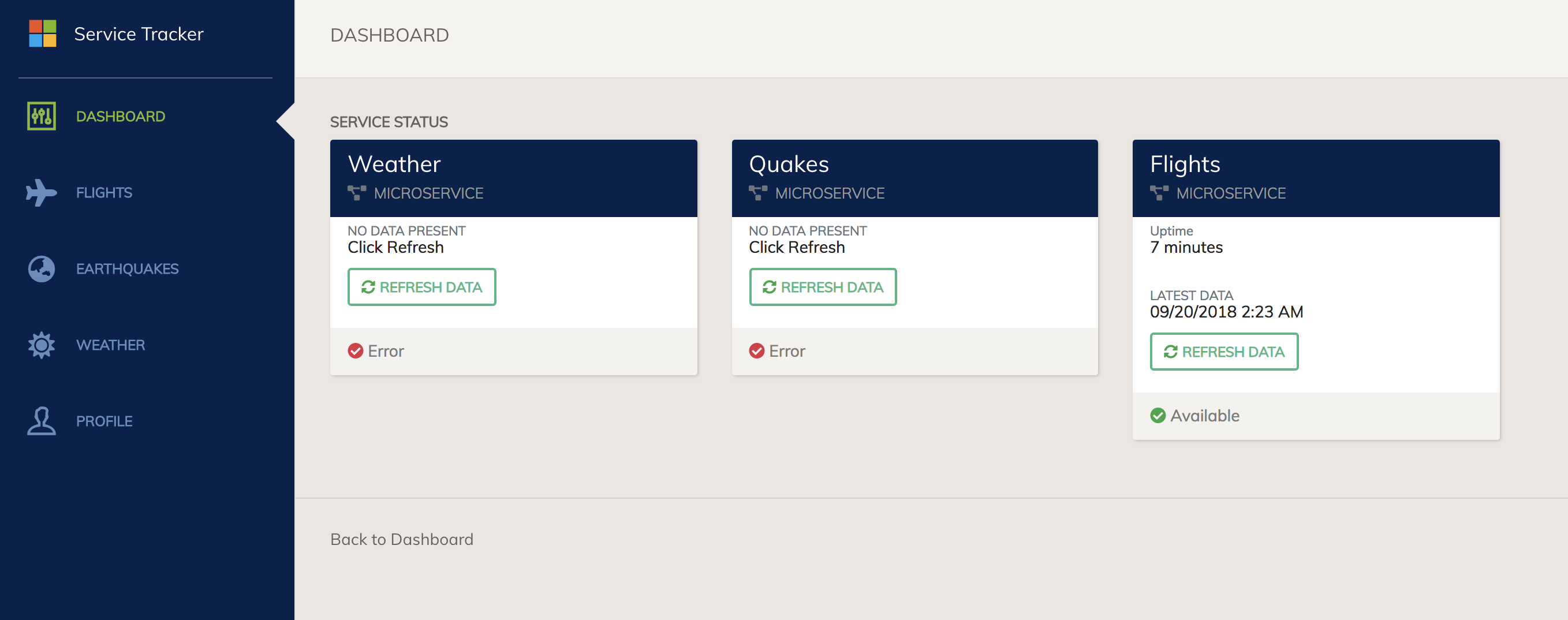kubernetes-hackfest
Delivering modern cloud-native applications with open source technologies on Azure Kubernetes Service
Lab: Helm Setup and Deploy Application
In this lab we will setup Helm in our AKS cluster and deploy our application with Helm charts.
Prerequisites
- Helm Version 3+
- Clone this repo in Azure Cloud Shell.
- Complete previous labs:
Instructions
Note: The following lab assumes Helm version 3. Run the following to confirm your Helm version: ```bash helm version
Example Output:
version.BuildInfo{Version:”v3.8.0”, GitCommit:”d14138609b01886f544b2025f5000351c9eb092e”, GitTreeState:”clean”, GoVersion:”go1.17.5”} ```
-
Review the Helm Chart components
In this repo, there is a folder for
chartswith a sub-folder for each specific app chart. In our case each application has its own chart.The
values.yamlfile has the parameters that allow you to customize release. This file has the defaults, but they can be overridden on the command line.The
templatesfolder holds the yaml files for the specific kubernetes resources for our application. Here you will see how Helm inserts the parameters into resources with this bracketed notation: eg - `` -
Customize Chart Parameters
In each chart we will need to update the values file with our specific Azure Container Registry.
-
Get the value of your ACR Login Server:
az acr list -o table --query "[].loginServer" -g $RGNAME Result ------------------- youracr.azurecr.io -
Replace the
acrServervalue below with the Login server from previous step. In the Azure Cloud Shell, select the file editor ‘{}’. Navigate to the yaml files below. To save changes, select the elipticals on the right hand side and select Save. You will make this change in all of the charts below:Replace all
acrServervalues:export ACRSERVER=$(az acr list -g $RGNAME -o table --query "[].loginServer" --output json | jq -r '.[]') echo "export ACRSERVER=$ACRSERVER" >> ~/workshopvars.env find charts -name values.yaml -exec sed -i 's/youracr.azurecr.io/'${ACRSERVER}'/g' {} \;charts/service-tracker-ui/values.yaml
charts/weather-api/values.yaml
charts/flights-api/values.yaml
Example:
# Default values for chart service: type: ClusterIP port: 3009 deploy: name: data-api replicas: 1 acrServer: "youracr.azurecr.io" imageTag: "1.0" containerPort: 3009 -
Validate that the
imageTagparameter matches the tag you created in Azure Container Registry in the previous lab. -
Add
imagePullSecretto each deployment.yaml file for each microserviceNOTE: Only do if the Service Principal role assignment in Build Application lab failed. You will need to add the Docker Registry secret that was created to each deployment via a mechanism called an imagePullSecret.
charts/service-tracker-ui/templates/deployment.yaml
charts/weather-api/templates/deployment.yaml
charts/flights-api/templates/deployment.yaml
charts/quakes-api/templates/deployment.yaml
charts/data-api/templates/deployment.yaml
Example Before:
... containers: - image: "/hackfest/weather-api:" imagePullPolicy: Always ...Example After (2 imagePullSecrets lines added):
... imagePullSecrets: - name: regcred containers: - image: "/hackfest/weather-api:" imagePullPolicy: Always ...
-
-
Deploy MongoDB
kubectl apply -f charts/mongo/.Wait for the mongo pod to be in ‘Ready’ state before deploying the rest of the application. You can watch the pod status with the following:
watch kubectl get pods -n hackfest -
Deploy Charts
Ensure namespace was created earlier:
kubectl get ns hackfest NAME STATUS AGE hackfest Active 4mInstall each chart as below (note: the following commands expect your working directory to be /kubernetes-hackfest you may need to return to this if you have changed workind directory in previous steps):
# Application charts helm upgrade --install data-api charts/data-api --namespace hackfest helm upgrade --install quakes-api charts/quakes-api --namespace hackfest helm upgrade --install weather-api charts/weather-api --namespace hackfest helm upgrade --install flights-api charts/flights-api --namespace hackfest helm upgrade --install service-tracker-ui charts/service-tracker-ui --namespace hackfest -
Initialize application
- First check to see if pods and services are working correctly
kubectl get pod,svc -n hackfest NAME READY STATUS RESTARTS AGE pod/data-api-5bdc5c94b4-8xfq2 1/1 Running 3 5d3h pod/flights-api-77f77464df-n7jb4 1/1 Running 4 5d15h pod/quakes-api-7c8b96b594-vm5qd 1/1 Running 4 5d15h pod/service-tracker-ui-c4476d778-hpn5q 1/1 Running 3 5d6h pod/weather-api-56d6c57b89-cds8v 1/1 Running 4 5d15h NAME TYPE CLUSTER-IP EXTERNAL-IP PORT(S) AGE service/data-api ClusterIP 10.0.179.206 <none> 3009/TCP 7d4h service/flights-api ClusterIP 10.0.255.59 <none> 3003/TCP 7d4h service/quakes-api ClusterIP 10.0.122.46 <none> 3012/TCP 7d4h service/service-tracker-ui LoadBalancer 10.0.24.184 40.71.20.1 8080:30757/TCP 5d6h service/weather-api ClusterIP 10.0.124.80 <none> 3015/TCP 7d4h- Browse to the web UI
kubectl get service service-tracker-ui -n hackfest NAME TYPE CLUSTER-IP EXTERNAL-IP PORT(S) AGE service-tracker-ui LoadBalancer 10.0.24.184 40.71.20.1 8080:30757/TCP 5d6hOpen the browser to http://40.71.20.1:8080 (your IP will be different #obvious)
-
You will need to click “REFRESH DATA” for each service to load the data sets.

-
Browse each map view and have some fun.
Troubleshooting / Debugging
- Make sure Helm version on the client and server are the same to ensure compatibility.